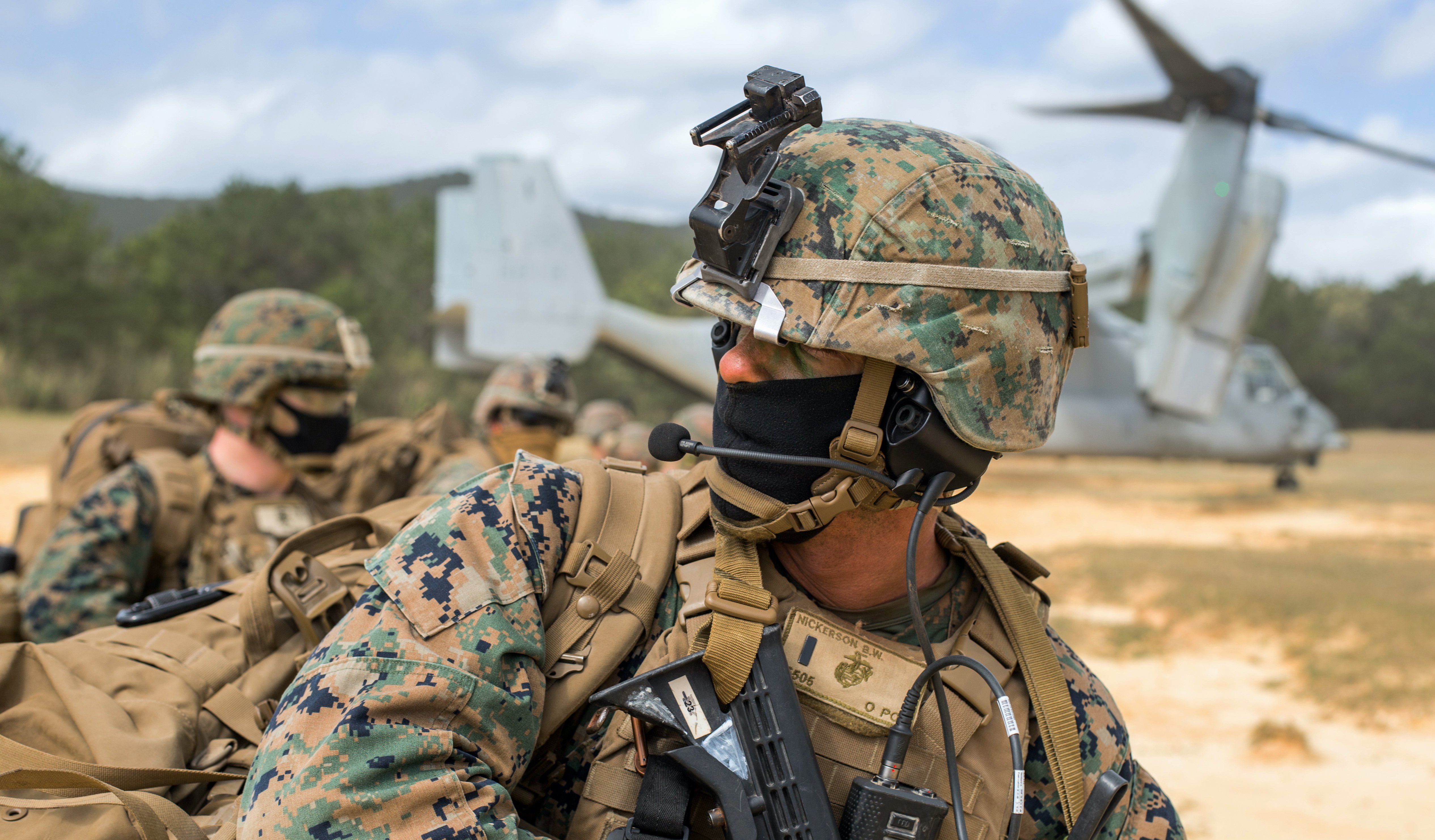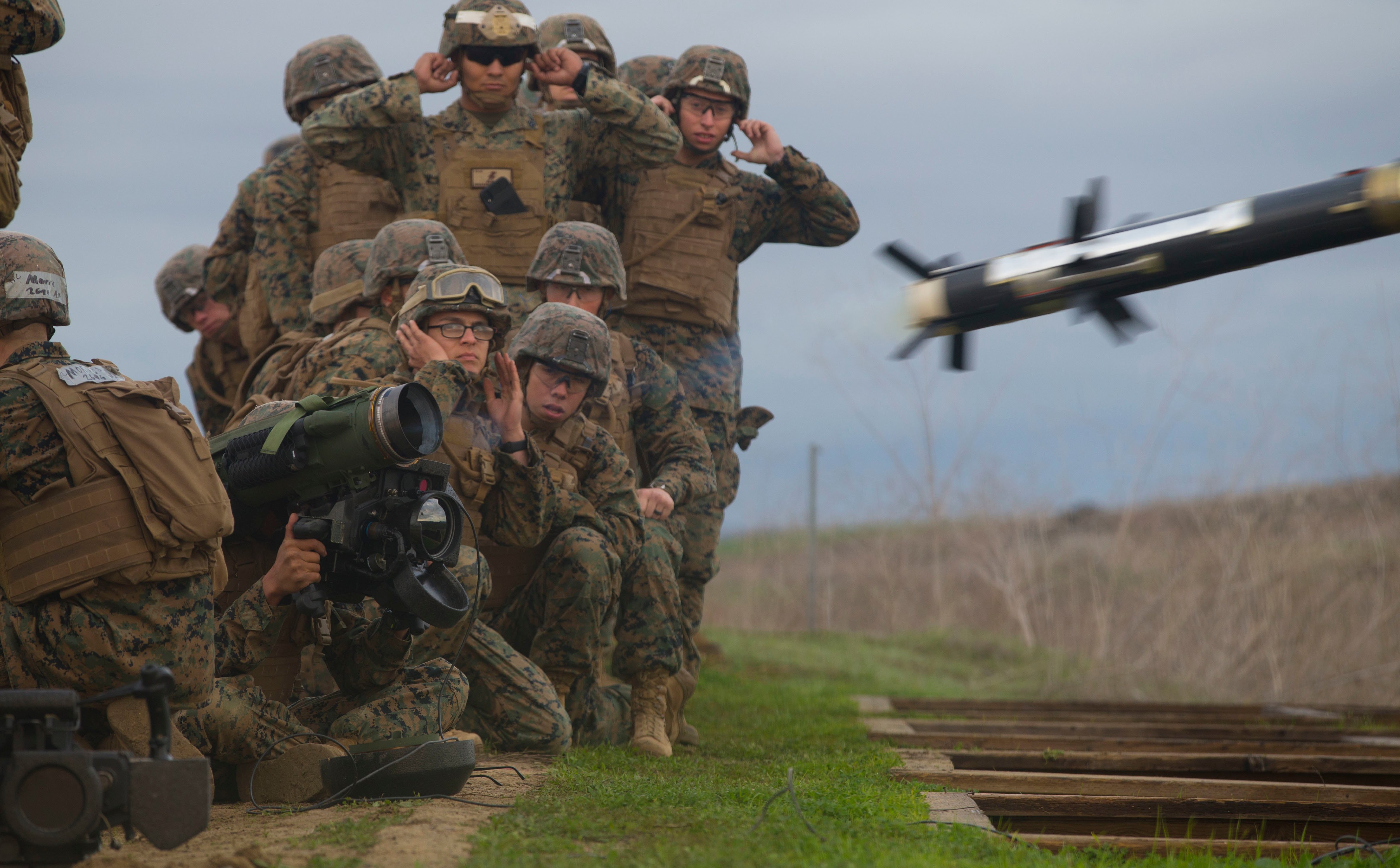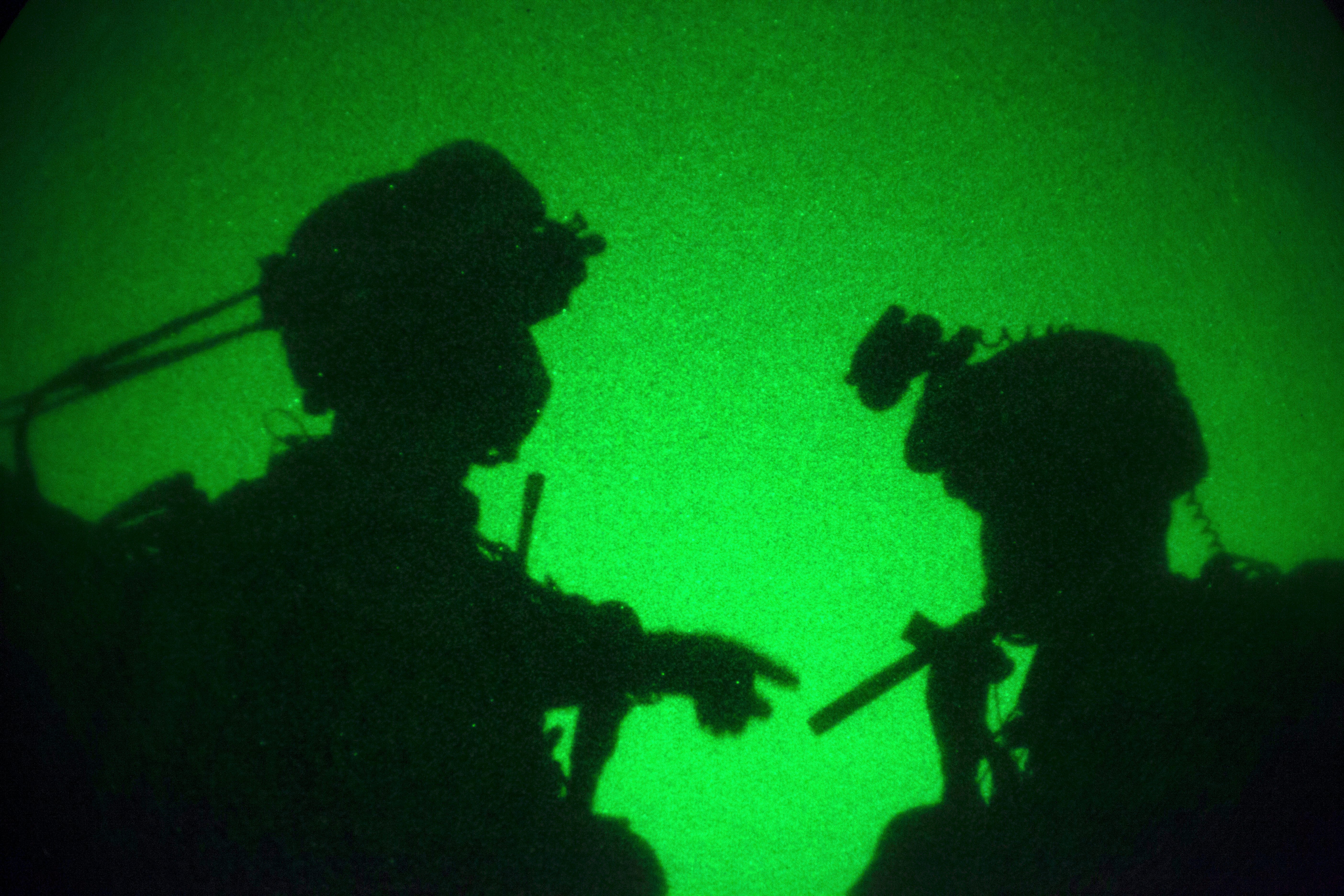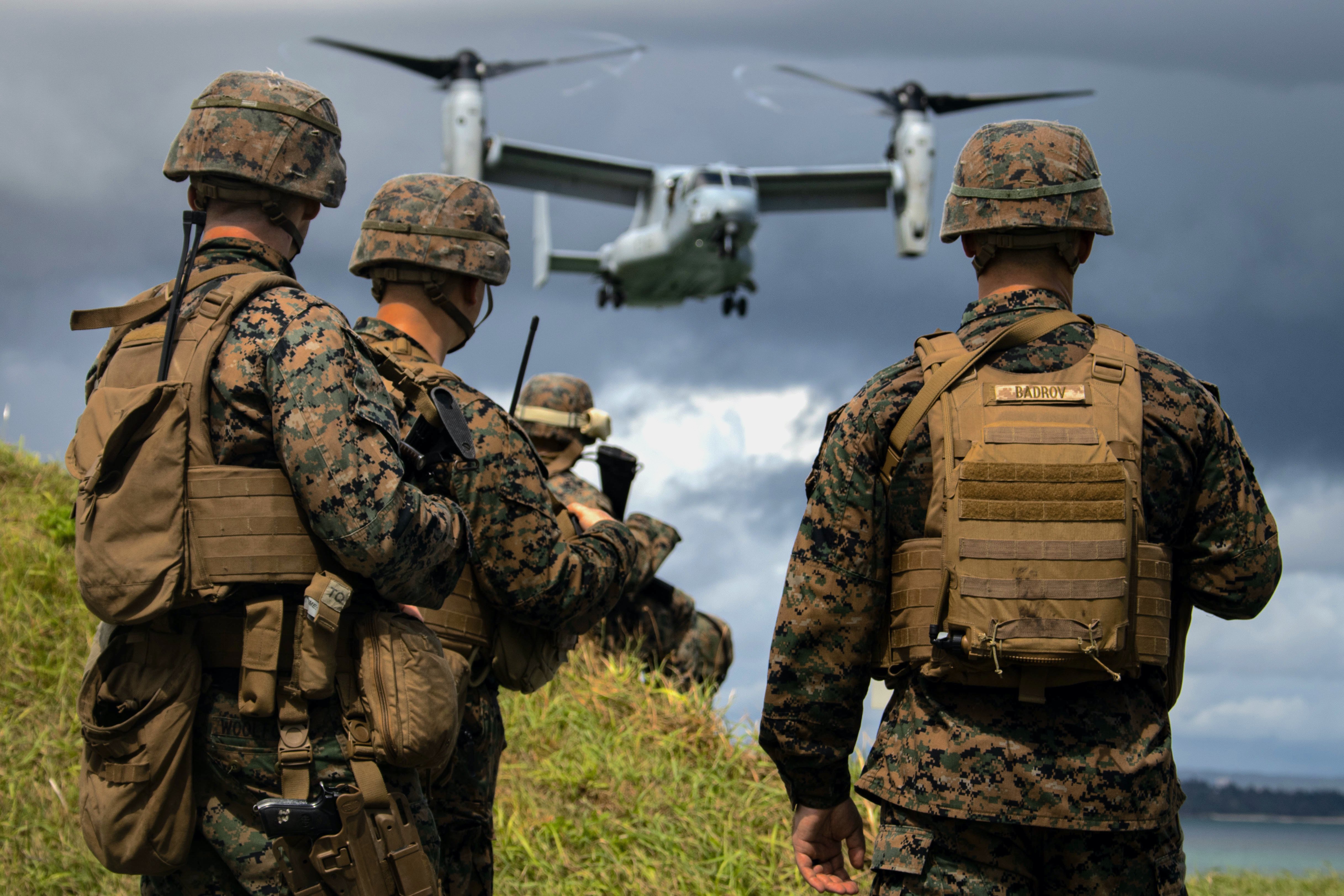
The Marine Corps has released the first version of its Expeditionary Advanced Base Operations manual and is kicking off a two-year process of near-constant experimentation and analysis to help refine the document before it becomes formal doctrine.
EABO asks small formations of Marines to move by sea to strategic pieces of land to conduct a mission – surveillance, launching anti-ship missiles, setting up a rugged forward refueling and rearming base, jamming an enemy – and then retreat back to the sea and move elsewhere.
The Marine Corps is investing in new technology to support these kinds of operations, including the Light Amphibious Warship, long-range anti-ship missiles, unmanned systems, new communications gear and more, all of which the service is experimenting with.
But the service needs to ensure that the fundamentals of EABO are right, regardless of what technology the Marine Corps ends up fielding – and that’s what this tentative manual and subsequent experimentation drive are all about.
The most useful upcoming events will be “those experimentations that challenge that [foundational definition of EABO] and then challenge those missions and tasks that are written in Chapter 1, right up front. They will really give focus to, are we capable, are we getting this right, what do we need to change?” Col. Tony Henderson, the director of concepts and plans at the Marine Corps Warfighting Lab, told a small group of reporters today on the phone.
All aspects of EABO – from the missions, such as sea control and sea denial, maritime domain awareness and forward surveillance and sustainment; to the tasks, which include air and missile defense, offensive strikes, anti-submarine warfare and more; to the technologies needed to blend in in a contested environment and distribute small groups across wide swaths of sea and land – will be tested in ways big and small over the next two years, Henderson said.

MCWL looks for informal opportunities, such as a Marine expeditionary unit working up ahead of a deployment, to insert a small experiment into already planned live operations. MCWL also works with the force to plan formal exercises, where a unit is designated to try out new gear or new tactics, and the entire live event is crafted around certain experimentation objectives.
Lt. Gen. Eric Smith, the deputy commandant for combat development and integration, told USNI News during the call that some of what distinguishes EABO from other kinds of operations is that it centers around Marines already living and operating inside a contested environment and the enemy’s weapons engagement zone, versus other operations where the Marines are on the outside and trying to fight their way in.
Asked how the Marines would experiment with and learn everything that comes along with being in this environment – a constant need to manage physical and electromagnetic signatures, a constant need to maintain situational awareness and be on the lookout for subtle changes that could mean the adversary is about to escalate from competition to conflict – Smith said many of the Marines operating in the Pacific are already doing this today.
More than 20,000 Marines today live within China’s WEZ, a figure that’s only growing as China’s capabilities expand in range. In the case of III Marine Expeditionary Force, “everything they do is inside the WEZ, because two-thirds of that MEF is inside the WEZ right now. So every time [III MEF Commanding General Lt. Gen. Stacy] Clardy goes to the field, whether it be to an exercise with the Thais or with the Filipinos or with the Australians – or honestly as we live and work daily with the Japanese on mainland Japan in the prefecture of Okinawa – every single training opportunity is actually an experimentation opportunity,” Smith said.
For example, he said the 31st Marine Expeditionary Unit is experimenting with a new unmanned aerial vehicle system now while underway in the Pacific.
II MEF out of North Carolina will take the lead on experimenting in the High North, and I MEF out of California will take the lead on desert environment experimentation.

Some experiments may be more formal than others, Smith said, “but on a daily basis, once this manual is in the hands of the [Fleet Marine Force], which is now is – every time they go to the field, that’s an informal experiment with a radio, with a formation, with a command and control concept that all feeds back to the lab. So you will now start seeing a really rapid acceleration in the number of, quote, experiments, at all levels, small up to large.”
Henderson said the Marines settled on an approach to write an unclassified document to educate the force on what EABO was envisioned to be, conduct experimentation based on a common understanding of EABO fundamentals, collect lessons and refine their EABO ideas before settling on a final EABO doctrine. The tentative manual, the unclassified document that kicks off this process, was drafted by a six-person team of mostly Marine Corps majors and lieutenant colonels who had been squadron and battalion operations officers or executive officers and could use that experience in Navy-Marine Corps training and operations to inform the path forward with EABO.
Feedback is already making its way to MCWL, he said, and the lab will seek to examine experimentation insights and figure out which ones ought to be formalized into changes to the manual and to tactics, techniques and procedures. The tentative manual may be updated along the way if enough changes are validated, and by 2023 there will certainly be another iteration of the manual. Smith and Henderson did not commit to a timeline for releasing formal doctrine, with Smith saying that the EABO manual needed to be “solid enough upon which we can build a foundation, but not so rigid that it can’t be adjusted. And remember, it’s based on a pacing threat, and that pacing threat is constantly changing and moving and attempting to deceive us and attempting to counter what we do. So this is a really hard balance, to turn a tentative manual into doctrine.”
But what’s important, they said, is that they move with urgency to push the EABO concept forward.
2023 “was a mark the commandant put on the wall because that’s what he believes he owes the combatant commanders, the joint force commanders, in order to actually deter the pacing threat who’s constantly moving. So that’s where ‘23 was generated, and he has given me no relief from that,” Smith said.
In addition to working out the basics of EABO, the Marines have a lot to learn about the gear they’ll need to successfully execute it, as well as the training and manpower to do so.
On technology, Henderson told USNI News during the call that “one of the things we debated and argued over was, if we put a specific tech into the manual, did we limit innovation and creativity, whether from industry, whether from ourselves? And we decided to err on the part of, let’s be agnostic and let’s see what creativity comes” from Marines thinking about the problems they face under EABO and seeking innovative solutions.

“The manual tried to be agnostic to technology and agnostic to a specific formation – even, to much extent, agnostic to a given region in the world,” said Henderson, who has been selected for promotion to brigadier general.
Smith said this was an important feature because both Marine Corps technology and adversary technology is rapidly evolving. As long as the Marines can prove EABO works with today’s communications gear, then fielding a better communication system that’s even harder to intercept and jam will only make EABO easier and more effective. The same is the case for the Marines’ pursuit of long-range anti-ship missiles, for which the service has a plan to start with the Naval Strike Missile and later pursue even more capable systems.
Additionally, in the course of all this experimentation, Smith said he expects to learn a lot about what kinds of Marines should be performing certain missions and therefore if there are any training or manning implications. He stressed that the Marine Corps was firm in its belief that it would self-fund all these changes by divesting of legacy gear and some occupational specialties – and that developing an EABO capability couldn’t lead to an overall increase in budget top line or personnel end strength – but Henderson and Smith said they may find new types of skillsets and competencies, especially in the domains of cyber and information warfare, where perhaps new military occupational specialties will be created, or more thought will be given as to how to develop a cyber warrior of the right rank and skillset to perform a job.
Though many changes may come as a result of this EABO experimentation, Smith stressed that the Marine Corps would still retain its ability to do forcible entry, humanitarian assistance and disaster relief, partner-building exercises and other traditional missions.
”We are a force … that’s capable of doing EABO, but it is not an EABO force,” he said.





